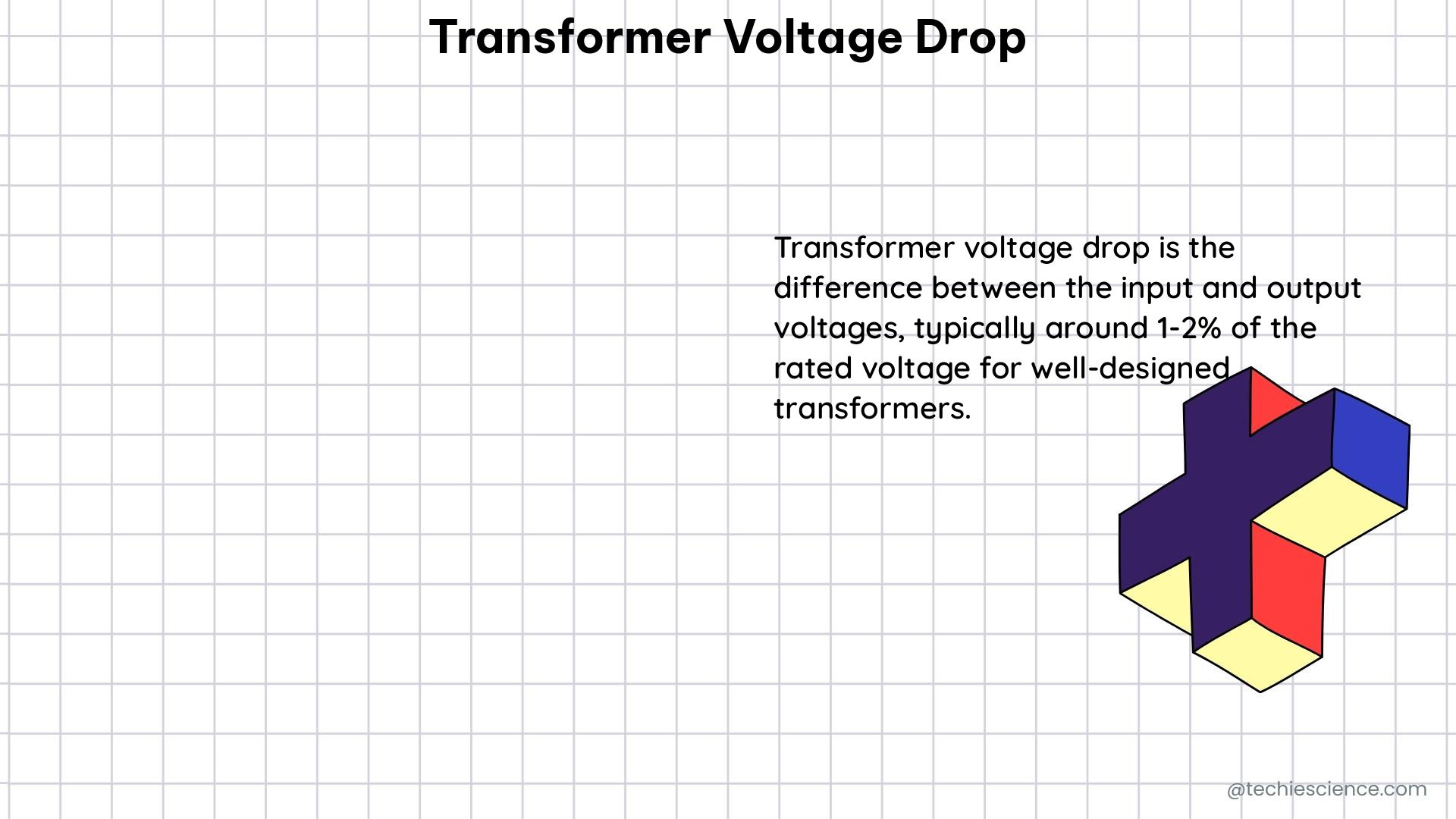The voltage drop in a transformer is a critical factor in the design and operation of power systems. It is the decrease in voltage from the input to the output of the transformer, and it is caused by the resistance and reactance of the transformer windings. Understanding the causes, measurement techniques, and calculation methods of transformer voltage drop is essential for electronics students to design and analyze power systems effectively.
Understanding Transformer Voltage Drop
Transformer voltage drop occurs due to the resistance and reactance of the transformer windings. The resistance of the windings causes a voltage drop due to the current flowing through them, while the reactance of the windings causes a voltage drop due to the inductive and capacitive effects.
The voltage drop in a transformer can be calculated using the following formula:
Voltage Drop = I × (R + jX)
Where:
– I is the current flowing through the transformer
– R is the resistance of the transformer windings
– X is the reactance of the transformer windings
The resistance and reactance of the transformer windings can be measured or obtained from the transformer’s datasheet.
Measuring Transformer Voltage Drop

Transformer voltage drop can be measured using various methods, including the use of current transformers (CTs) and voltage transformers (VTs).
Current Transformers (CTs)
A CT is a device that produces a secondary current proportional to the primary current. By measuring the voltage drop across the CT, the transformer voltage drop can be calculated using the formula:
Voltage Drop = I × (R_CT + R_load)
Where:
– I is the current flowing through the transformer
– R_CT is the resistance of the CT
– R_load is the resistance of the load connected to the transformer
Voltage Transformers (VTs)
A VT is a device that produces a secondary voltage proportional to the primary voltage. By measuring the voltage drop across the VT, the transformer voltage drop can be calculated using the formula:
Voltage Drop = V_primary - V_secondary
Where:
– V_primary is the primary voltage of the transformer
– V_secondary is the secondary voltage of the transformer
Artificial Neural Networks (ANNs)
The voltage drop in a transformer can also be estimated using artificial neural networks (ANNs). ANNs are computational models that can learn to recognize patterns and make predictions based on data. In a study titled “Estimation through ANN of Voltage Drop Resulting from Overloads on Power Transformers”, researchers used ANNs to estimate the voltage drop in power transformers based on the transformer’s load and other operating conditions.
Factors Affecting Transformer Voltage Drop
The voltage drop in a transformer can be affected by several factors, including:
-
Transformer Load: The voltage drop increases as the load on the transformer increases. This is due to the increased current flowing through the transformer windings.
-
Transformer Winding Resistance: The voltage drop is directly proportional to the resistance of the transformer windings. Transformers with higher winding resistance will have a higher voltage drop.
-
Transformer Winding Reactance: The voltage drop is also affected by the reactance of the transformer windings. Transformers with higher winding reactance will have a higher voltage drop.
-
Transformer Power Loss: The voltage drop in a transformer can also be affected by the transformer’s power loss. Power loss in a transformer can be divided into no-load loss and full-load loss. No-load loss is a constant loss that occurs even when no load is connected to the transformer, while full-load loss varies with the load on the transformer. The power loss can be used to calculate the voltage drop in the transformer.
Calculating Transformer Voltage Drop
To calculate the voltage drop in a transformer, you can use the formula:
Voltage Drop = I × (R + jX)
Where:
– I is the current flowing through the transformer
– R is the resistance of the transformer windings
– X is the reactance of the transformer windings
Alternatively, you can use the formula:
Voltage Drop = I^2 × (R_winding + R_load)
Where:
– I is the current flowing through the transformer
– R_winding is the resistance of the transformer windings
– R_load is the resistance of the load connected to the transformer
The resistance and reactance of the transformer windings can be obtained from the transformer’s datasheet or measured using appropriate equipment.
Practical Applications and Importance for Electronics Students
Understanding transformer voltage drop is essential for electronics students who are designing and operating power systems. Accurate calculation and measurement of transformer voltage drop can help in the following applications:
-
Transformer Sizing: Knowing the voltage drop in a transformer is crucial for selecting the appropriate transformer size and rating for a given application.
-
Voltage Regulation: Transformer voltage drop can affect the voltage regulation of a power system. Analyzing and minimizing the voltage drop can help maintain the desired voltage levels at the load.
-
Efficiency Optimization: Reducing the voltage drop in a transformer can improve the overall efficiency of the power system, leading to energy savings and reduced operating costs.
-
Fault Analysis: Transformer voltage drop can be used as a diagnostic tool to identify and troubleshoot issues in power systems, such as overloading, winding faults, or transformer aging.
-
Power Quality: Excessive voltage drop in a transformer can lead to power quality issues, such as voltage fluctuations, harmonics, and power factor problems. Understanding and mitigating transformer voltage drop can help maintain the desired power quality.
By mastering the concepts and techniques related to transformer voltage drop, electronics students can develop the necessary skills to design, analyze, and optimize power systems in various applications, such as industrial, commercial, and residential power distribution.
Reference:
- Study of Distribution Transformer Voltage Drops in Feeder 5 Out Going Districts 4 and 6 at PT PLN Persero Tarakan City North Kalimantan
- Voltage Measurement on a Current Transformer (CT) – Physics Forums
- Estimation through ANN of Voltage Drop Resulting from Overloads on Power Transformers
- Calculating Voltage Drop in a Transformer | All About Circuits
- Voltage Drop Calculation Through Transformer – Mike Holt’s Forum

Hi……I am Kaushikee Banerjee completed my master’s in Electronics and Communications. I am an electronics enthusiast and am currently devoted to the field of Electronics and Communications. My interest lies in exploring cutting-edge technologies. I’m an enthusiastic learner and I tinker around with open-source electronics.